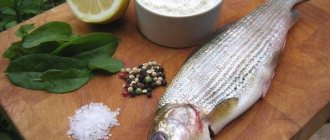White fish: photo and description
Biologists usually divide fish into bony and cartilaginous, benthic or pelagic. The term "white" is more of a culinary term, and in the traditional sense it refers to all fish whose flesh is white. In nature, they live in both fresh and marine waters and are found in all corners of the globe.
There is a wide variety of white fish species. Many of them have been the main objects of fishing since ancient times. Today they continue to be mined on a significant scale and do not leave store shelves all year round.
Based on their skeletal structure, fish are often divided into flat and round. The first type usually includes species with flattened sides and a wide back. Their typical representative is flounder. Its unusual appearance is due to the fact that it spends most of its time at the bottom. A fish with rounded sides and a narrow back is called round. Unlike flat species, its ribs are directed downwards from the ridge and have a curved shape, the eyes are located on the sides, and not on the back.
The list of white fish is quite long. Most often found on the shelves:
- sea bream;
- halibut;
- flounder;
- capelin;
- cod;
- Bluewhite;
- hake;
- oil;
- notothenia;
- pangasius;
- pollock;
- tilapia;
- savorin
Fatty sea fish: list
Fatty fish contain significant amounts of fat in all tissues of the body and in the abdominal cavity. Here's a list of fatty fish:
- sea trout
- mackerel
- anchovies
- sardines
- sprat
- acne
- herring
- pollock
- tuna
- shark
- Atlantic sturgeon
- sea bass
- flounder
- halibut
All of these fish are rich in omega-3 fatty acids, whether they are canned, fresh or frozen.
Nutritional quality
White fish is usually less fatty and not as expensive as red fish. But it is no less useful and is often recommended for dietary and simply healthy eating. It is a valuable source of protein, amino acids, phosphorus, calcium, magnesium, potassium, manganese, zinc, vitamins B, E, A, D. Compared to meat, it is less caloric and heavy, and also contains less connective and fatty tissue.
The presence of substances necessary for the body in white fish largely depends on its habitat, lifestyle, and conditions of detention. It is believed that the most healthy meat will come from those individuals that were caught in the wild and not raised in artificial ponds. So, it will not contain growth hormones and antibiotics. An important factor for the taste and other qualities of fish is the cleanliness of the reservoir in which it lives. For this reason, experts do not advise buying a product caught in the Mekong River.
Sea white fish, as a rule, contains more iodine, vitamins D and B. It is also rich in salts necessary for the normal functioning of our body, and usually lives in cleaner water. At the same time, mercury often accumulates in it, which is why some species (bigeye and yellowfin tuna, Spanish mackerel, grouper, marlin, white croaker) are dangerous to consume.
River fish is considered less healthy, but lighter and more dietary. But iron from it is absorbed by the body better than from sea water. The most famous names of white fish that live in fresh water bodies: pike, perch, pike perch, bersh, chop, roach, silver bream, carp, carp.
Recommended consumption rates
In 1994, the UK Committee on Medical Aspects of Food and Nutrition Policy (COMA) recommended that people eat at least two portions of fish per week, one of which should be oily fish.
In 2004, the UK Food Standards Agency published guidelines on recommended minimum and maximum amounts of oily fish to be eaten per week to balance the benefits of omega-3 fatty acids with the potential dangers of consuming PCBs and dioxins. It reaffirmed the 1994 guidelines of two servings of fish per week, including one serving of oily fish. However, it recommended eating no more than four servings per week, and no more than two servings for pregnant or breastfeeding women ().
The US Environmental Protection Agency (EPA) says the maximum permissible oral dose of methylmercury is 0.1 micrograms per kg of body weight per day. The corresponding blood mercury limit is 5.8 µg/L. Restrictions apply to certain fatty fish:
- marlin
- swordfish
- shark
- tuna (to a lesser extent) ()
Recommendations for maximum intake of oily fish were up to four servings (1 serving = 140 g) per week for men, boys and women past childbearing age, and up to two servings per week for women of childbearing age, including pregnant and lactating women, and girls. There is no recommended limit on the consumption of white fish.
The 2007 EPA and USDA guidelines set a limit only for the consumption of oily fish with more than one part per million of methylmercury, specifically:
- malacanthas
- king mackerel
- shark
- swordfish
However, there are restrictions for breastfeeding/pregnant women and children under six years of age. These populations should completely avoid consuming fish with a high risk of mercury contamination (listed above), and limit their consumption of fish with moderate and low levels of methylmercury to 340 grams per week. Consumption of longfin tuna (albacore) should be limited to 170 g or less per week.
Tags: Fish
- Related Posts
- Mackerel: benefits and harm to the body
- Shrimp: benefits and harm to the body
- Pangasius: benefits and harm to the body
« Previous entry
Mackerel
Mackerel is a popular medium-sized game fish. It feeds on small fish and invertebrates, but also becomes prey for large water inhabitants such as tuna, marlin, dolphins and sharks. Various species of mackerel live from temperate to tropical zones, inhabiting the Atlantic, Indian and Pacific oceans. They are found off the coasts of Western Europe, Northern and Central Africa, Southeast and Eastern Asia, Australia and Oceania.
Mackerel has fatty and tender meat that contains large amounts of vitamin D and B12. In our area, it is often consumed smoked or salted, but it can be prepared in other ways. It is boiled, steamed and baked. Due to its high fat content, it is not recommended for those who have problems with the liver, stomach, intestines and kidneys.
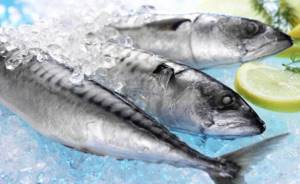
capelin
Capelin, or uek, is a small but very healthy white fish. It contains more selenium and vitamins A and B than meat. Capelin is rich in iodine, fluorine, sodium, bromine, calcium and is recommended for people who are prone to diseases of the cardiovascular system and thyroid gland.
This is a schooling fish that lives exclusively in sea waters. It rarely grows more than 25 centimeters, and on the shelves its dimensions, as a rule, are 10-20 centimeters. Capelin inhabits the northern seas of the Atlantic and Pacific Oceans. Several million tons of this fish are caught there every year, but they are not in danger of extinction. Due to its high fertility, the capelin population is quickly recovering. One fish brings from 2 to 60 thousand eggs.
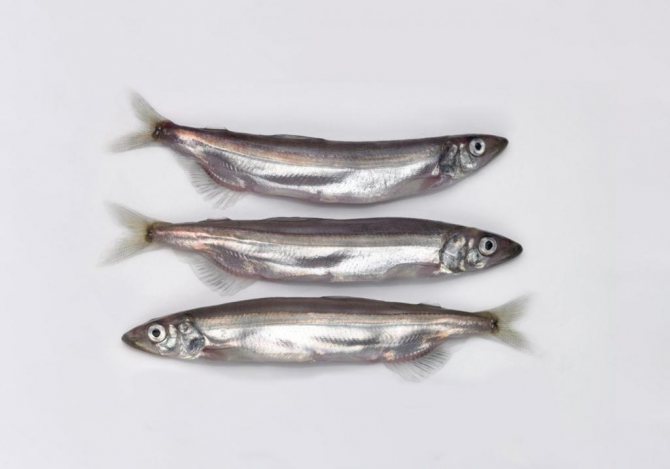
Calorie content and composition
Despite the low price of dory and low demand, the composition of the fish is in many ways more valuable than other seafood delicacies.
A 100 gram serving contains:
- 8 grams of fat;
- 19.25 grams of protein;
- 1.54 grams carbohydrates.
Minerals in sunflower contain:
- iodine;
- fluorine;
- phosphorus;
- potassium;
- iron;
- zinc;
- manganese;
- sodium.
100 grams of fish contains the following dosage of vitamins:
- B 1 or thiamine – 0.016 mg;
- B 2 or riboflavin – 0.4 mg;
- B 5 or pantothenic acid – 0.047 mg;
- B 6 or pyridoxine – 0.024 mg;
- B 9 or folic acid – 2.13 mg;
- A or carotene – 21.7 mg;
- C – 1.24 mg;
- PP – 0.2 mg;
- K or phylloquinone – 0.11 mg.
Such a rich composition implies a low calorie content of dory.
| Cooking method | Number of kcal per 100 grams |
| Fried fish | 114 |
| Boiled | 93 |
| In a slow cooker | 95 |
| Baked in the oven | 95 |
Zander
One of the most famous and valuable species of white fish is pike perch. It belongs to the perch family and lives in water bodies of the Earth’s Northern Hemisphere. Common pike perch is found in rivers and fresh lakes in Asia and Eastern Europe, while the Canadian and yellow species live in the United States and Canada. It is found mainly in fresh water bodies, but the marine species lives in the basin of the Black and Caspian Seas.
Pike perch is a large predatory fish. The length of its body can exceed a meter, and its weight usually reaches 10-20 kilograms. The main feature of pike perch is its fastidiousness. The fish is very sensitive to the purity of water and, at the slightest contamination, migrates to another body of water. Thanks to this, it practically does not accumulate harmful substances and has high nutritional qualities. In addition, pike perch meat has few bones, but is rich in protein, microelements and essential amino acids. It is recommended for strengthening the immune system, muscles, blood vessels and hair.
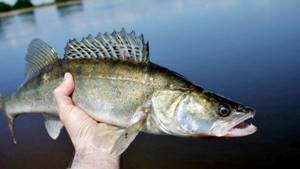
Halibut
Halibut fish is a flounder fish. It is an inhabitant of the great depths of the Atlantic and Pacific oceans. It is found mainly in the northern part of the globe and is found off the coast of North America, Kamchatka, the Far East and Japan.
The body of halibut, like that of flounder, is flat. Its eyes are located in the upper part, allowing the fish to lie completely with its belly on the bottom of the reservoir. Halibuts live for several decades, growing from 70 to 130 centimeters in length. They weigh from 5 to 30 kilograms. However, fishermen also caught individuals weighing 100-200 kilograms.

Flat fish
This group includes very few varieties, since in comparison with the total mass, their number is relatively small. There are only three main representatives: flounder, halibut and tilapia. The former are marine species, the latter are predominantly freshwater.
Flounder
In total, there are about three dozen species of flounder.
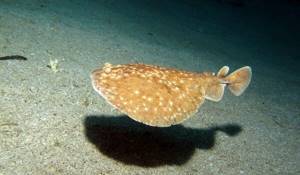
This fish has a body flattened on both sides, devoid of stripes.
The color of the upper part is usually bright (yellow or orange), the bottom of the flounder is white. It feeds on crustaceans and bivalves. Habitat: Black, Azov, Mediterranean Sea, Atlantic Ocean. The average weight of fish reaches 3 kg. Spawning occurs in early spring. Long-lived (life expectancy up to 50 years).
It has great flavor and a medium amount of bones. Despite the fact that the population is not yet in danger, it is declining by 2-3% per year.
tilapia
The name tilapia, or tilapia, unites several hundred fish that belong to the cichlid family. They prefer warm waters and live mainly in the tropical zone of the planet. It is believed that the homeland of tilapia is Asia Minor, but today the fish are widespread in fresh water bodies of Asia, Africa, North and South America.
Various types of this fish have gained popularity not only as a culinary product, but also as pets. Back in the 19th century, tilapia was kept in aquariums, which was facilitated by its unpretentiousness and peaceful nature. Today, fish is widely consumed due to its content of vitamins B5, B6, B9, B12, E, K and important microelements. Some scientists note that the ratio of omega-3 and omega-6 in fish is not the same, and consider it a potentially hazardous product.
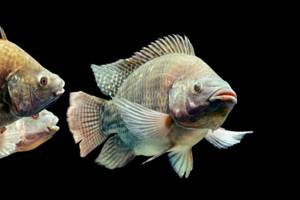
White livebearers and their neighbors
Poeciliids are perhaps the most popular fish. They are very unpretentious and perfectly compatible with each other, which allows you to create interesting company even in small aquariums. The white varieties have appropriate names: “white prince” guppies, silver molly, Bulgarian white swordtails. The latter sometimes have a red head, and will go well with the pearl scarlet guppies, which have a white body and bright red fins.

Guppy "White Prince"
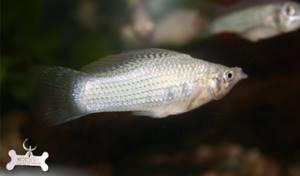
Silver molly
Catfish are good neighbors for most types of aquarium fish. White catfish are found among corydoras - speckled albino catfish. They come completely white or with a golden tint.
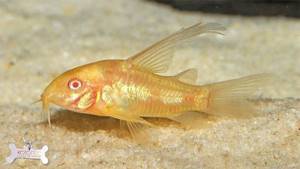
Veil Corridor
White aquarium betta fish are completely indifferent to the company of other peaceful fish. Even one cockerel is enough to admire its luxurious white fins, like sails, for a long time.

Crown-tailed cockerel
Catfish
Catfish is a fish from the order Perciformes. It is represented by five genera and lives in the northern regions of the Atlantic and Pacific oceans. Catfish is found in the Chukchi, Barents, White, Norwegian, Baltic and North seas, falling no lower than the temperate zone.
The fish weighs up to 30 kilograms and reaches 1-2 meters in length. It got its name due to its powerful, well-developed jaw and short but sharp cone-shaped teeth. They are very useful to her during hunting, helping to split the durable shells of sea animals.
Catfish have a narrow, elongated body, reminiscent of the body of an eel or moray eel. Fish meat is tender and nutritious, but it is not very easy to cook. It does not hold its shape well and easily spreads in a frying pan or baking sheet. In order for the fish to retain its shape, it must be soaked in a weak salt solution.

Harm to fish
White fish is an important product in any diet. It contains a lot of useful substances that are quite capable of replacing meat. At the same time, it belongs to products that cause allergies, so you should not abuse fish.
It is very important to include different types of it in the menu, without focusing on one. Along with essential vitamins and microelements, white fish often contains substances harmful to health, such as toxins, radioactive particles and heavy metals. You shouldn’t refuse it because of this, but before buying it is important to find out where the fish was caught and how it was kept. The lowest health risks are found in anchovies, Atlantic haddock, Atlantic mackerel and herring, sardines, and barramundi. The highest amounts of harmful substances are found in tuna, summer flounder, grouper and bluefish.


